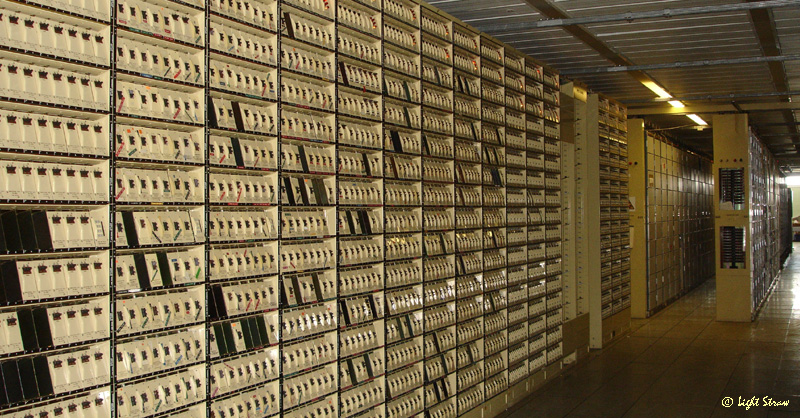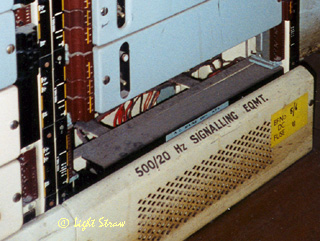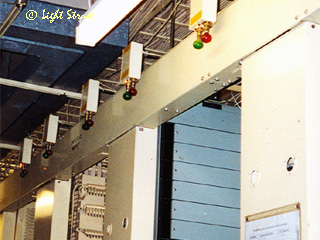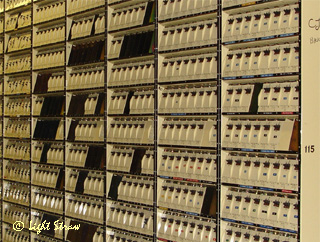 |
Inter-exchange signalling on the junction, trunk and international networks has evolved over the years from simple digital techniques on copper cables, through analogue to high speed data and voice capability at ever more flexible bandwidths over fibre. |
Apart from the standard LD loop-disconnect (pulse) and DTMF-Dual Tone Multi-Frequency (tone) signalling of which today's buyers of modern telephones need to be aware, there are many other types of signalling which were developed for use on circuits between exchanges. Inter-exchange signalling on the junction, trunk and international networks has evolved over the years from simple digital techniques on copper cables, through analogue to high speed data and voice capability at ever more flexible bandwidths over fibre.
Signalling Types
A brief summary of types:
The types of signalling are often prefixed by SS, thus SSDC1 is Signalling System Direct Current No.1
DC Systems
DC1-Direct Current System No 1- Also known as L.D.D.C. (Long Distance Direct Current) used low pass filters, transformers and thermionic valves to produce a change in current in the line which could be readily detected at the receiver. This was superseded by the less complicated...
DC2- Single Commutation Direct Current (S.C.D.C.) signalling using polarised relays which responded to line current in opposite directions to overcome pulse distortion.
DC3-for longer distances and used on the Transit Network
DC4-a special 4-wire system used with MF3 between manual boards and international exchanges.
DC5- introduced as E & M signalling in 1975 to be used for wideband private circuits.
DC6-9-no details available
DC10-also used on private networks
DC11-allocated for a DC system to be used with MF6, but never used.
AC Systems
AC1-was known as a '2VF' system because it used 2 Voice Frequencies to send and receive signals.
AC2x
AC3 500/20 System
Very early trunk circuits made use of Generator Signalling in which the normal 17Hz ringing current from the exchange was received at a repeater station, converted to 500Hz, (interrupted at 20 times per second) and sent to line. (Hence the name 500/20 signalling). The receiver used tuned circuits to correctly pass through a valid signal.
 |
AC3 500/20 System. |
AC5
AC6
AC7
AC8
AC9 A 4-wire '1VF' system (2280Hz) which superseded AC1 signalling for use with the Trunk Mechanisation of the network. Used mainly by operators setting up trunk calls in the days before STD became fully available. Early versions used valve amplifiers. A transformer in circuit enabled use on 2-wire circuits.
AC10
AC11
AC12
AC13 - was introduced in 1968 for long-distance automatic dialling.
AC14
AC15 - superseded AC13 in the late 1970s.
AC16
AC17
Multi-Frequency Systems
MF1 MF2 MF3 MF4 MF5 MF6
International Systems
CCITT (International Telephone & Telegraph Consultative Committee)
CCITT No.1 CCITT No.2 CCITT No.3 CCITT No.4 CCITT No.5 CCITT No.5 CCITT No.6 CCITT No.7
Miscellaneous
Mechanical Pulse Regenerators - once used for signalling between junctions of exchanges.
Pulse or Tone?
Pulse dialling is usually 10 pps (pulses per second) i.e. the loop on the line is broken 10 times per second when the number 10 is dialled.
Tone dialling, also known by the trade mark Touchtone, is whereby the pressing of the buttons produces two combined tones per button to give the familiar bleeping or tuneful dialling. Multi-Frequency or MF tones are sent down the line.
Signalling Systems
Coaxial Equipment Line (CEL)
 |
Coaxial Equipment Line (CEL) Systems. |
 |
Pulse Code Modulation (PCM) Systems. |
A review of UK Signalling Systems by Peter Walker (THJ Issue 31).
All logos and trade marks are the property of their respective owners and are used on the Light Straw site(s) for review only. Students and researchers are recommended to make their own independent enquiries as to the accuracy of the information contained therein.